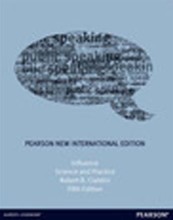Summary: Animal Behaviour | 9780190276782 | Shawn E Nordell, et al
- This + 400k other summaries
- A unique study and practice tool
- Never study anything twice again
- Get the grades you hope for
- 100% sure, 100% understanding
Read the summary and the most important questions on Animal Behaviour | 9780190276782 | Shawn E. Nordell, Thomas Valone
-
1 The science of animal behaviour
This is a preview. There are 8 more flashcards available for chapter 1
Show more cards here -
How does an ethogram work?
It is a formal description of an animal's behavior
By using this ethogram, one can study animal behaviour and point out on a time scale what this animal does. With this data of behavioural categories/names, research can be done in behavioural biology. -
What does H0 and H1 mean?
H0: A=B, H1: A = not B -
Describe the difference between top-down and bottom-up
The top-down approach goes from the general to the specific, and the bottom-up approach begins at the specific and moves to the general -
Describe the observational, experimental and comparative research methods and the use of modelling
Obeservational method: here, thecausality is unclear. It can verify other results.- Experimental method: here, the
causality is in fact clear, but it is subject to ethics. - Comparative method: is used for
relatedness (ultimate explanations) , and the understanding of the evolution of traits. Itintegrates a lot of different fields of science. Modelling : it is done when certain systems are very complex, and it cannot be disturbed. Ityields predictable results.
-
What are the three conditions for evolution and describe these?
- Heredity: DNA/RNA, genes
- Variability: mutations, recombination, gene flow
- Selection: natural or sexual selection, selection dirft
- Heredity: DNA/RNA, genes
-
Where does selection act on, and what influences this?
On phenotype, that is influenced by genotype, epigenetics and environment: these are the visible or otherwise measurable physical and biochemical characteristics/ the composite of an organisms observable characteristics or traits -
Why is there variation - how does variation come about?
- Different genetic make up of individuals
GxE interactions - Learning and experience
- Absence of
selective pressures - Differences between
populations (environments ) - gene flow - Frequency-dependent selection: the fitness of a trait depends on its frequency relative to other
phenotypes : positive (fitness increases) and negative (fitness decreases)
- Different genetic make up of individuals
-
What is the benefit of evolution by natural selection?
It favours behavioural adaptations that enhance fitness.
Defenition: natural selection is a natural occurring selection process that drives changes, may result in new species -
What are (indirect) measures of fitness?
- Life time reproductive success (# of reproducing offspring)
- Survival
- Number of mates
- Body size, growth rate
- Feeding efficiency
- Positively correlated with fitness
- In the long run: fitness = 0 (on the species level at least)
- Life time reproductive success (# of reproducing offspring)
-
Explain the modes of natural selection that describe population changes
- Directional selection: (a) individuals with high trait values have higher fitness than individuals with low trait values. (b) The dashed line is the population before selection, the solid line is the population after selection.
- Disruptive selection: (a) individuals with low and high trait values have the highest fitness. (b) The dashed line is the population before selection, the solid line is the population after selection.
- Stabilising selection: (a) individuals with intermediate trait values have the highest fitness. (b) The dashed line is the population before selection, the solid line is the population after selection.
- Directional selection: (a) individuals with high trait values have higher fitness than individuals with low trait values. (b) The dashed line is the population before selection, the solid line is the population after selection.
- Higher grades + faster learning
- Never study anything twice
- 100% sure, 100% understanding
































